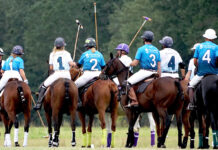 |
We’ve all heard it before — how the Eastern Shore of Mobile Bay was once an endless meadow of underwater grass. How someone could pull 70 soft shell crabs from the grass beds in a night. But are these descriptions true, or are they just the nostalgic ramblings of a few old-timers?
Known in the scientific community as “submerged aquatic vegetation, ” seagrass plays a crucial yet underappreciated role in the local ecosystem. The grasses run from the Delta to the Gulf of Mexico, nursing the Bay’s young and filtering our water. In fact, you can thank underwater grasses for that seafood you ate the other day.
Here, get the scoop on one of Mobile Bay’s most valuable players and the conditions that threaten its future.
HOLDING IT DOWN
Underwater grasses improve water quality by stabilizing sediments and filtering out contaminants. They even reduce coastal erosion by dispersing the energy of waves and currents.
VARIETY SHOW
The waters surrounding Mobile support a variety of aquatic vegetation, differentiated by size, complexity and tolerance to salinity. The main species to be found in the low salinity conditions of the Delta belong to the genus Vallisneria (grasses known as wild celery, tape grass and eelgrass). Widgeon grass is perhaps the most widespread, growing from the Delta all the way to the salty waters of the Gulf. Shoal grass, resembling lawn grass, resides in portions of the Gulf as far north as the Carolinas.
LIGHTEN UP
In order for seagrasses to thrive, roughly 15 to 20 percent of the light that hits the surface of the water needs to reach the grass leaves. By comparison, algae only require 1 percent of sunlight, which is why it’s common to see beds of algae even when seagrasses have disappeared.
BEGGERS CAN'T BE CHOOSERS
Although technically an invasive grass species, Eurasian watermilfoil (or simply, milfoil) has proven to be a useful addition to the local ecosystem. Originally from Europe and Asia, the plant was introduced in North America many years ago and has spread far and wide. While efforts were once undertaken to eradicate the invasive plant, studies have shown that the grass benefits animals much in the same way as native species. As local Delta legend Jimbo Meador phrases it, “Any grass is better than no grass.”
BABIES”R”US
Seagrasses serve as a valuable nursery for baby shrimp, crabs, fishes and other Bay critters. In fact, it’s estimated that more than 70 percent of commercially important species spend a part of their lives in submerged aquatic vegetation.
Mobile’s underwater lawn
- According to Ken Heck, a senior marine scientist at the Dauphin Island Sea Lab, it’s hard to say exactly how much underwater vegetation once thrived in our waters (seagrass populations weren’t mapped until 2002). “The best estimate is that around half of the grass that used to exist in Mobile Bay and coastal Alabama has disappeared, ” he says. The Eastern Shore in particular is said to have once supported a vigorous grass habitat.
- The biggest threat facing underwater vegetation is poor water clarity. With so much annual rainfall, Mobile is particularly vulnerable to the dangers of runoff. This means that, when it rains, sediments and pollutants are washed directly into our waterways over paved surfaces, rather than filtering naturally through the ground. Murkier water equals less sunlight for underwater grasses.
- Besides providing a habitat for local creatures, grass beds are also a valuable food source. Manatees feed directly on the grass, but most animals feed on the algae that accumulate on the plant’s leaves.
- Underwater vegetation can be successfully transplanted and restored, but it’s not easy. “Transplanting doesn’t work too well, ” Heck explains. “You’ve got to improve water conditions before transplanting, and that’s pretty tough to do.”
- Near Ono Island, researchers have devised a clever tool to encourage the regrowth of grass beds scarred from boat propellers. “Bird stakes, ” essentially bird perches mounted on PVC pipes, are placed in areas that need rejuvenation. Birds rest on these perches and will, when nature calls, provide a healthy shot of fertilizer.
text by Breck pappas • photo courtesy of tropica.com





